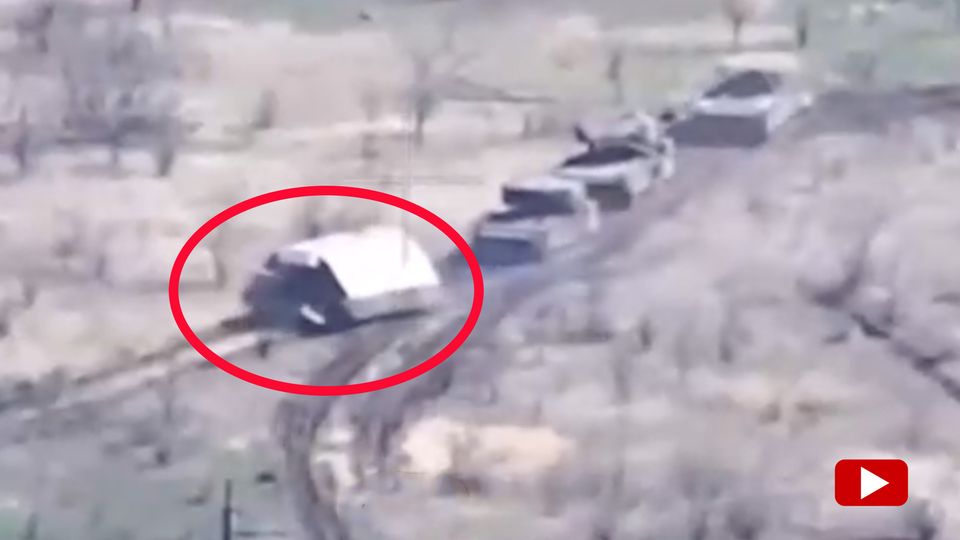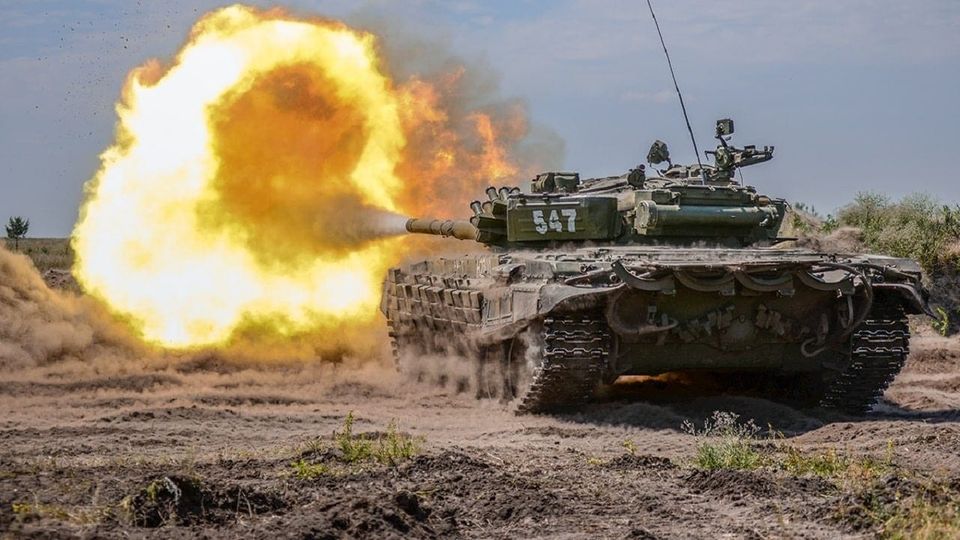War in Ukraine
Turtle tank – this is what the tanks converted in Mad Max style are used for
Screenshot of the turtle shell
© Telegram
A video from the Ukraine war is currently causing astonishment. In it, a T-72 with a huge welded-on protective canopy attacks Ukrainian positions. The bizarre vehicle is no joke, the modifications serve a special purpose.
A few days ago, a vehicle like one of the Mad Max films rumbled towards the Ukrainian lines. The “Turtle Shell”. The Russians had welded a flat, pointed roof like a doghouse onto a T-72. At the front, the barrel of the 125 mm cannon looked out of the “gable”. The turret could no longer be turned; the cannon still had a swivel range of perhaps 20 degrees.
What would that be good for? Shortly after the start of the war, the Russians began adding additional armor to their to assemble vehicles. Additional packages of reactive armor have been installed. The metal cages that cover the tank like a canopy are striking. They create a second shell. Just like the Germans did in World War II with the metal aprons for the Sturmgeschütz III and the Panzer IV.
Little protection against drone attacks
These designs do not necessarily defend against projectiles and advanced anti-tank guided missiles, but they are very effective against grenades that are simply dropped by drones. Even FPV drones have to make sure to get past the cages when approaching. If the tank is stationary, it’s not a big challenge – but when it’s moving, it is. At first the concept was laughed at in the West, but Ukraine is now also equipping vehicles with similar designs. The Russians have now arrived at a concept of welded cages plus reactive armor. The whole thing is necessary because tanks are primarily protected at the front. Less on the sides, and they offer almost no protection at the rear or top.
Not every drone takes out a tank
There are usually videos circulating on the Internet that give the impression that an attacking drone would always destroy a tank. This is often not the case; armored vehicles can survive several drone attacks. All the material makes the tank heavier, but not more incapable of fighting – that’s different with the turtle tank. Its value in combat is very limited due to the limited swing range of the main weapon. There is also the reduced field of vision.
Tank is supposed to attract drones
The turtle shell is not intended to fight – it has another purpose. He is supposed to draw fire and drones from the Ukrainians and thus protect the personnel carriers driving behind him. There are probably electronics under the protective roof that interfere with the generic drones. If it is effective, a precise final approach is not possible.
The turtle therefore survived numerous drone attacks during its use. In general, it is not a tank vehicle, but rather an assault troop taxi. The entire armored column serves only to move infantrymen very quickly through no man’s land and drop them off at a ditch, a line of trees or near buildings. The opposing side usually doesn’t have five minutes to stop the attack. Shortly after the appearance, the turtle tank was turned off, in another twist of the Ukrainian War. The proud builders filmed the tank in the hall where it was hidden. The roof structure was briefly visible from below, which was enough to identify the location. The hall including the turtle was destroyed in a rocket attack.




